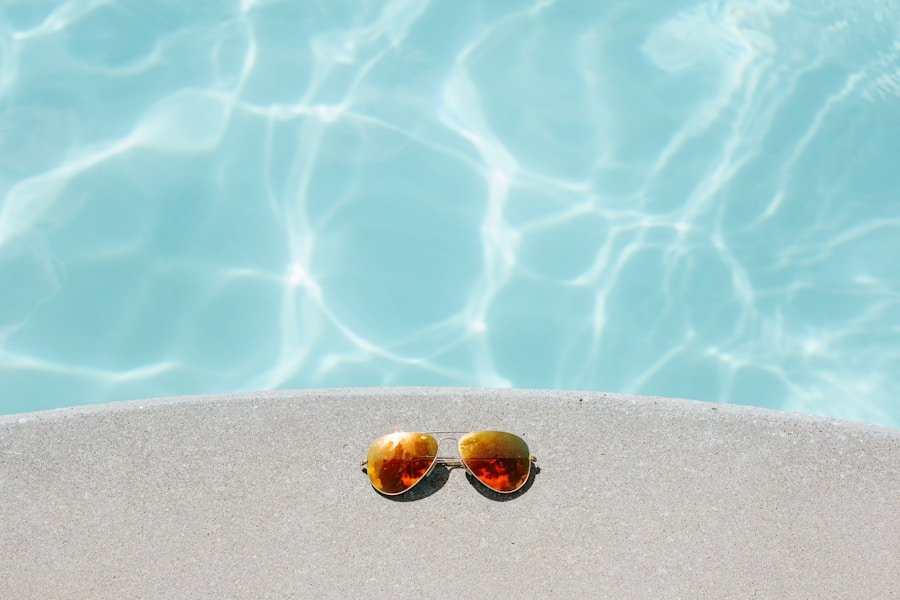Water reflections can add a stunning and captivating element to your photography. Understanding the basics of water reflections is essential for capturing beautiful and impactful images. When light hits the surface of the water, it creates a reflection of the surrounding environment. The angle of the light, the movement of the water, and the objects surrounding the water all play a role in creating unique and dynamic reflections. It’s important to pay attention to the quality of light, the color of the water, and the overall composition of the scene when capturing water reflections. By understanding these basics, you can create visually striking images that draw viewers in and evoke a sense of tranquility and beauty.
In addition to understanding the technical aspects of water reflections, it’s also important to consider the emotional impact of these images. Water has long been associated with feelings of calm, serenity, and introspection. By capturing water reflections, you can convey these emotions to your audience and create a sense of connection and resonance. Whether you’re photographing a serene lake at sunset or a bustling cityscape reflected in a river, water reflections have the power to evoke a wide range of emotions and create a lasting impression on viewers.
Choosing the Right Time and Location for Water Reflection Photography
Choosing the right time and location for water reflection photography is crucial for capturing stunning and impactful images. The quality of light, the weather conditions, and the surrounding environment all play a role in creating dynamic and visually striking reflections. One of the best times to capture water reflections is during the golden hour, which occurs during sunrise and sunset when the light is soft, warm, and diffused. This type of light can create beautiful and dramatic reflections that add depth and dimension to your images. Additionally, calm and still water conditions are ideal for capturing clear and crisp reflections. Look for locations with minimal wind or movement in the water to ensure that your reflections are sharp and well-defined.
When choosing a location for water reflection photography, consider the surrounding environment and how it will impact your images. Natural bodies of water such as lakes, rivers, and ponds can provide stunning opportunities for capturing reflections of the surrounding landscape. Urban environments with skyscrapers, bridges, and other architectural elements can also create unique and captivating reflections. Consider how the elements in the environment will interact with the water to create interesting and visually appealing compositions. By carefully choosing the time and location for your water reflection photography, you can maximize your chances of capturing stunning and impactful images that resonate with viewers.
Using the Right Equipment for Capturing Water Reflections
Capturing compelling water reflections requires using the right equipment to ensure that you can capture sharp, clear, and well-defined images. While you don’t necessarily need expensive or high-end gear to capture stunning water reflections, there are certain tools and accessories that can help enhance your images. A sturdy tripod is essential for water reflection photography, as it will help stabilize your camera and ensure that your images are sharp and free from camera shake. Additionally, using a polarizing filter can help reduce glare and reflections on the surface of the water, allowing you to capture clearer and more vibrant reflections.
In addition to using the right equipment, it’s important to consider the type of camera and lens that you use for water reflection photography. A camera with manual settings will give you more control over your exposure and allow you to fine-tune your images to capture the perfect reflection. A wide-angle lens can be particularly effective for capturing expansive landscapes reflected in water, while a telephoto lens can help isolate specific elements and create more intimate compositions. By using the right equipment for capturing water reflections, you can enhance the quality of your images and create visually stunning photographs that leave a lasting impression on viewers.
Composition and Framing Techniques for Stunning Water Reflection Photos
Composition and framing are essential elements of creating stunning water reflection photos. By carefully considering how you frame your shots and compose your images, you can create visually striking photographs that draw viewers in and evoke a sense of wonder and beauty. When composing your water reflection photos, consider how you can use leading lines, symmetry, and balance to create dynamic and visually appealing compositions. Look for interesting elements in the environment that can be reflected in the water, such as trees, buildings, or mountains, and use them to create compelling visual narratives.
In addition to composition techniques, framing your shots effectively can also enhance the impact of your water reflection photos. Consider how you can use natural frames within the environment, such as overhanging branches or archways, to create depth and dimension in your images. By framing your shots thoughtfully, you can draw attention to the reflection while also providing context and visual interest in the surrounding environment. Experiment with different angles and perspectives to find unique and compelling ways to frame your water reflection photos, and don’t be afraid to get creative with your compositions to create visually stunning images that leave a lasting impression on viewers.
Utilizing Light and Weather Conditions to Enhance Water Reflections
Light and weather conditions play a crucial role in enhancing water reflections and creating visually stunning photographs. The quality of light during different times of day can dramatically impact the appearance of water reflections, so it’s important to pay attention to how light interacts with the environment when capturing these images. During the golden hour, when the light is soft, warm, and diffused, you can capture beautiful and dramatic reflections that add depth and dimension to your images. Additionally, overcast or cloudy weather conditions can create soft, even lighting that enhances the colors and details in water reflections.
In addition to light conditions, weather also plays a role in creating compelling water reflections. Calm and still water conditions are ideal for capturing clear and crisp reflections, so it’s important to pay attention to wind and other environmental factors that can impact the movement of the water. Rain or mist can add an ethereal quality to water reflections, creating a sense of mystery and intrigue in your images. By utilizing different light and weather conditions, you can enhance the impact of your water reflection photos and create visually stunning images that resonate with viewers.
Post-Processing Tips for Enhancing Water Reflection Photos
Post-processing is an essential step in enhancing water reflection photos and bringing out their full potential. By carefully editing your images, you can enhance colors, contrast, and details to create visually stunning photographs that leave a lasting impression on viewers. When editing water reflection photos, pay attention to how you can enhance the clarity and sharpness of the reflection while also bringing out details in the surrounding environment. Adjusting contrast and saturation can help bring out vibrant colors in your reflections, while sharpening tools can enhance details and textures in the water.
In addition to basic adjustments such as contrast and saturation, consider how you can use creative editing techniques to enhance the impact of your water reflection photos. Experiment with different color grading styles to create unique moods and atmospheres in your images, or use selective editing tools to draw attention to specific elements within the reflection. By carefully editing your water reflection photos, you can bring out their full potential and create visually stunning images that resonate with viewers on an emotional level.
Creative Ideas for Experimenting with Water Reflection Photography
Water reflection photography offers endless opportunities for creativity and experimentation. By thinking outside the box and trying new techniques, you can capture unique and visually striking images that stand out from the crowd. One creative idea for experimenting with water reflection photography is to play with perspective by capturing reflections from unusual angles or vantage points. By getting low to the ground or shooting from elevated positions, you can create dynamic compositions that add depth and dimension to your images.
Another creative idea for experimenting with water reflection photography is to incorporate movement into your images. By capturing reflections in rippling or flowing water, you can create abstract and dynamic compositions that add a sense of energy and movement to your photos. Experiment with different shutter speeds to capture varying levels of movement in the water, from gentle ripples to dramatic waves. By incorporating movement into your water reflection photos, you can create visually stunning images that evoke a sense of dynamism and excitement.
In conclusion, water reflection photography offers endless opportunities for creativity and experimentation. By understanding the basics of water reflections, choosing the right time and location for photography, using the right equipment, applying composition techniques effectively, utilizing light and weather conditions thoughtfully, post-processing with care, and experimenting with creative ideas, you can capture stunning images that resonate with viewers on an emotional level. Whether you’re photographing serene landscapes reflected in still waters or urban environments mirrored in bustling rivers, water reflection photography has the power to evoke a wide range of emotions and create lasting impressions on viewers. With careful consideration of these factors and a willingness to experiment with new techniques, you can capture visually striking images that stand out from the crowd and leave a lasting impact on viewers.








